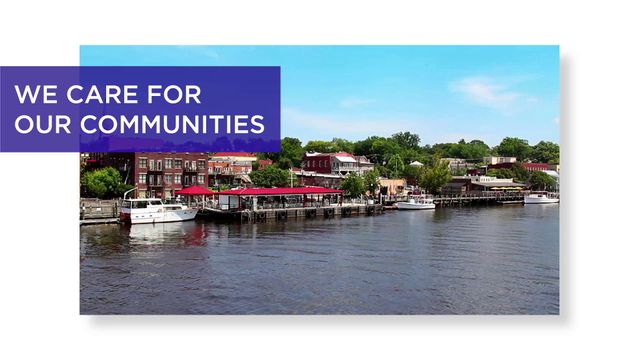Protecting community character throughout NC
North Carolina's cities and towns are diverse and unique, and the work done behind-the-scenes to protect their character is invaluable to each community.
Posted — UpdatedWhether living in a coastal or mountain tourism town or one of the state's largest cities, North Carolinians care about the character of their communities.
That is not to say, however, that community character is always easy to define.
Still, you know it when you see it: well-maintained or renovated historic homes and commercial buildings along a pedestrian-friendly small town main street; an older, restored warehouse district in a large city now thriving with restaurants and retail shops; the natural beauty seen in surrounding mountains or waterways that become a part of residents' everyday experience with greenways, boardwalks or parks that incorporate those natural features.
North Carolina's cities and towns are diverse and unique, and so, community character and how it is protected and enhanced looks very different in different places.
But who protects that community character? Cities and towns.
We see the aspects of community character. It can be an old mill building that is now a retail and restaurant space, parks and other public spaces that host musical performances and other entertainment, or a vibrant neighborhood filled with beautiful historic homes.
What we often don't see is how it comes about, the work going on behind the scenes. That work usually involves locally elected officials and town and city staff working with residents, business owners and developers.
And it comes in a lot of different forms.
It can be the creation or expansion of an historic district, allowing for state and federal tax credits to help building owners finance historic restorations and transformations of older buildings. It might be public investment in a new park, or connecting a greenway to an existing hiking or biking trail. It may be a streetscape project that makes a downtown area more walkable and livable, and the businesses in the area more attractive and accessible to customers.
The work often requires careful land-use planning, including zoning, to ensure that development occurs in ways that do not damage community character. Doing so, that planning protects home values from incompatible uses and preserves residents' quality of life.
One of the first uses of zoning in the United States came in Los Angeles, when homebuilders there sought to protect their investments from a local brick-making operation that could have caused home values to drop from the associated noise and other disturbances caused by the industrial operation.
Basic municipal zoning has largely followed that same basic path – grouping some residential, commercial and industrial uses to the same land areas to prevent unlike adjoining uses from harming the interests of one set of property owners over the other.
It is important to acknowledge that land-use planning and zoning has an uneven history in America.
During the first decades of the 20th century, some cities passed race-based zoning rules to formalize racial segregation. Even though the U.S. Supreme Court struck down such rules, so-called redlining of neighborhoods combined with federal loan practices made black or other minority homeownership difficult or impossible. Urban "renewal" projects and highway construction through poor neighborhoods did more damage to minority neighborhoods.
In recent decades, though, land-use planning and practices in U.S. cities have recognized the need to address past inequities, as well as take a comprehensive approach to better incorporate the work, home and leisure lives of residents. Mixed-use zoning – combining residential, retail and commercial use – has become an integral part in enhancing the character of urban corridors within cities and towns.
Comprehensive planning efforts that involve accessibility, aesthetics and bringing people together for play, work and commerce have become the norm in many towns and cities. Those plans typically involve wide community input from everyone – business owners, residents, developers, community leaders and planners – in months-long, coordinated planning sessions.
In North Carolina cities and towns, unified development ordinances that look at the effects and needs created by growth and how to coordinate it best to address all needs, have become commonplace. So too are periodically updated downtown development plans or strategic development plans focused on the needs in other parts of a town or city.
"We have a vision," said Doug Pearce, who has helped to develop properties and businesses in and around downtown Wake Forest. "Here, it is not 'look at what you've done.' No. Look at what we've done. No one person makes anything happen."
In Wake Forest, and all across cities and towns in North Carolina, that attitude of working together to protect and enhance community character at the local level has become pervasive. Communities create local visions and then make those visions happen with local decision-making. The result is a diverse array of cities and towns, each with their own character, adding to the quality of life for all residents.
Keeping up that momentum will mean continuing to protect community character, and doing so by protecting the ability of locally-elected officials to make decisions locally that reflect the wants and needs of the residents who elect them — and not allowing that local decision-making to be usurped at the state level.
• Credits
Copyright 2024 by Capitol Broadcasting Company. All rights reserved. This material may not be published, broadcast, rewritten or redistributed.






